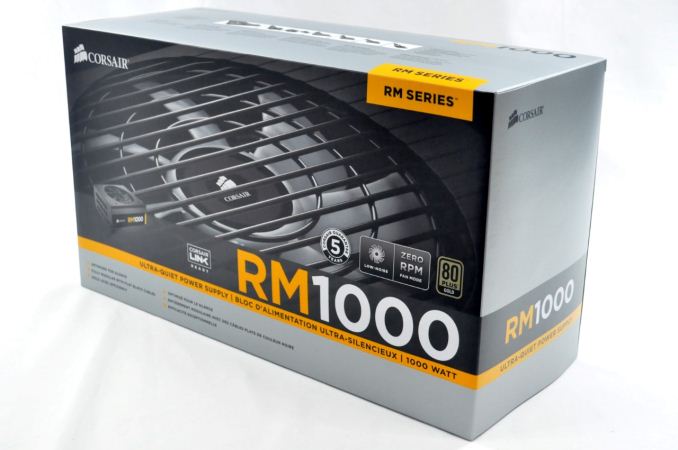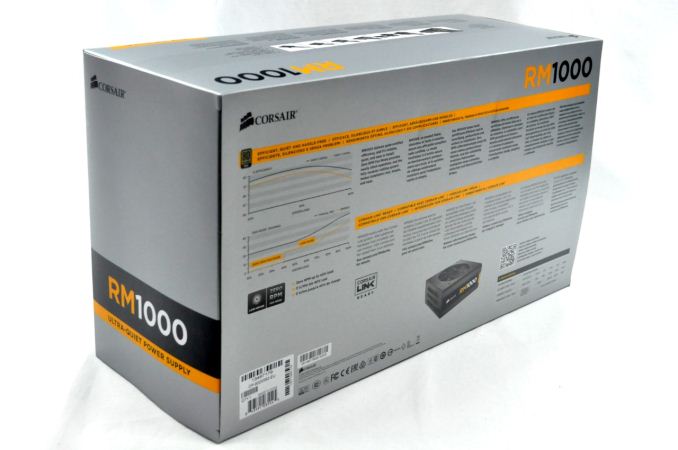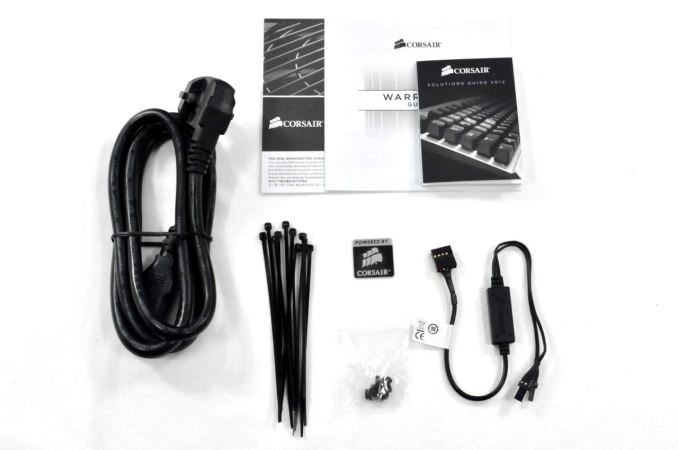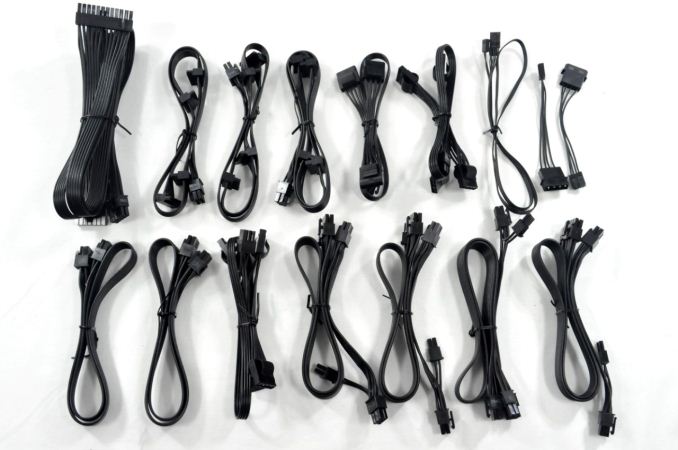Corsair RM1000 Power Supply Review
by E. Fylladitakis on April 24, 2014 6:00 AM EST- Posted in
- Cases/Cooling/PSUs
- Corsair
- PSUs
- RM Series

Introduction
Corsair has created a good reputation for their branded PSUs, and today they are among the most popular choices for gamers and enthusiasts. The first PSU from Corsair to find its way into our new testing lab is the RM1000, an 80 Plus Gold Certified unit with a rated output of 1000W at 40°C ambient. Given the rated power output and retail price of $169.99 after rebate, the RM1000 is understandably targeted at advanced users and gamers, and very few PCs require so much power. The target audience can be quite demanding, however, and a simple 80 Plus Gold certification is not enough to entice such users, so let's see what else Corsair has up their sleeves.
The RM series PSUs are optimized for silence and there are currently six models, ranging from 450W to 1000W. That makes the RM1000 the most powerful model of the series but it also is significantly different from the less powerful models as well. In fact, it's almost entirely different. The 750W and the 850W models come from a different ODM, as they are based off of Chicony Electronics designs, while Channel Well Technologies (CWT) supplies the other four models. As such, the RM1000 and the RM450/RM550/RM650 are all based on a CWT design, yet the RM1000 we're looking at is based on a different platform than that of the lower wattage models.
Corsair has had many CWT derived designs in the past and most of them were very popular among advanced users. However, times have changed and there is stiff competition in the market right now, especially in this particular segment, as every single manufacturer apparently wants a high performance 1000W model as their halo product, and the market has been virtually flooded with such PSUs. Not surprisingly, it's no longer possible to compete at the top of the market by simply offering a "high performance" PSU. Let's have a thorough look at the RM1000 and see what it can offer to consumers and where it falls short.
Packaging and bundle
We received the Corsair RM1000 inside a large, interestingly designed cardboard box. Most of the box is grey with yellow colored accents, the series' trademark. The front and sides of the box are relatively tidy, with badges and summarized descriptions of the most important features. The rear of the box offers a wealth of information regarding the performance of the power supply, summarized in charts and a table rather than tons of marketing text.
The Corsair RM1000 bundle is adequate, but it could have been better for a unit of this class. Alongside the power cord, manual and screws, Corsair also supplies a few cable ties, a case badge with the company's logo, a Corsair Link interface cable, and an advertising leaflet.
As this is a high output, fully modular unit, numerous cables are supplied alongside the PSU. All of the cables, including the ATX connector, are black ribbon cables without sleeving. Some will say they look significantly better than sleeved color-coded wires and require less space, though that's a matter of personal preference. while it looks like Corsair chose not to include a bag for the extra cables, the body of the unit itself comes wrapped inside a pouch for protection during shipping, and this pouch can be used to store the cables later on.














55 Comments
View All Comments
dirtyferret - Thursday, April 24, 2014 - link
too bad every professional reviewer disagrees with that opinionfrewster - Thursday, April 24, 2014 - link
Thanks for the good laugh. There seems to be an influx of people who believe that any PSU not made by Seasonic is trash, but that's BS.meacupla - Saturday, April 26, 2014 - link
The fan itself is a cheap sleeve bearing type.I don't understand why these companies opt for fans that can't be orientated horizontally without increased wear and noise. And the thing is, the price difference between a sleeve and double ball bearing fan is only about $1
benbenkr - Monday, May 12, 2014 - link
There's one issue these pro reviewers never seem to mention, coil whine. It doesn't inherently make a PSU bad, but boy it is annoying.I just replaced a RM650 due to the insane coil whine it has, even at low level loads.
The CWT made RM Corsair PSUs are quite solid, credit where it is due. But the coil whine is ridiculous. For that, I needed to change to a Seasonic KM3-based platform in the spirit of a Cooler Master (I know, a brand notorious for horrible PSUs) V700.
frewster - Thursday, April 24, 2014 - link
I don't think you know what you're talking about. Those ones made by Chicony? They're on par with Delta quality PSUs. And CWT? Hardly "horrible."YoloPascual - Saturday, April 26, 2014 - link
Yeah the server psu's that are made by Chicony are on par with Delta. The RM750 and RM850 are not. CWT made HX series are very good. CWT made RM series are mediocre at its finest. I does not need to be Seasonic/Super Flower made, but it should competent.just4U - Thursday, April 24, 2014 - link
I wish they'd use seasonic more.Voldenuit - Thursday, April 24, 2014 - link
I have a CWT ODM Corsair CXM-500 in my rig. My beef with it is that while it is pretty quiet at idle, running a GPU load (gaming, video benchmarks) on my GTX 760 will bring the fans up until it becomes the noisiest component in my system.Running a pure CPU load (undervolted i5 4670K) such as Prime95 does not elicit this behaviour, and I've controlled for other variables such as case, CPU and GPU fan speeds, so the threshold for "noisiness" from the PSU seems to be around 200-250W, which would correspond to a 40-50% load on the PSU.
It's not unbearable, and not worth returning or exchanging the unit, but it was a bit disappointing for me since I was trying to build as quiet a system as I could on my budget.
Voldenuit - Thursday, April 24, 2014 - link
PS It's worth noting that I don't have any sound measuring equipment, so I don't have any SPL measurements, and that my personal threshold for noise and my apartment noise floor might be very different from others'.I've seen posts both praising and condemning the same CX-500M (sorry, had the model number mixed up in OP), so YMMV.
lorribot - Thursday, April 24, 2014 - link
Does truly have a "chamfered edges and the rimmed bottom" as you state in the conclusion or should that be a ribbed bottom?